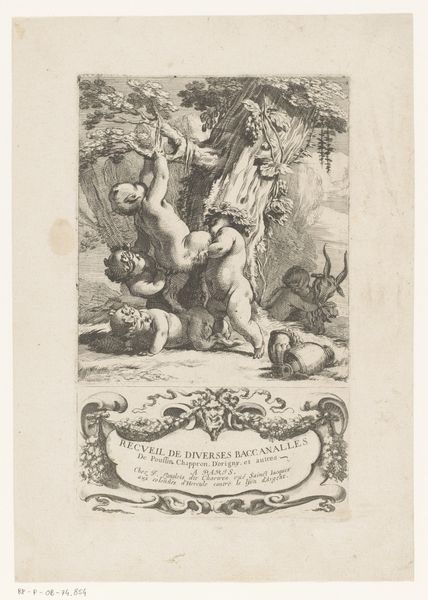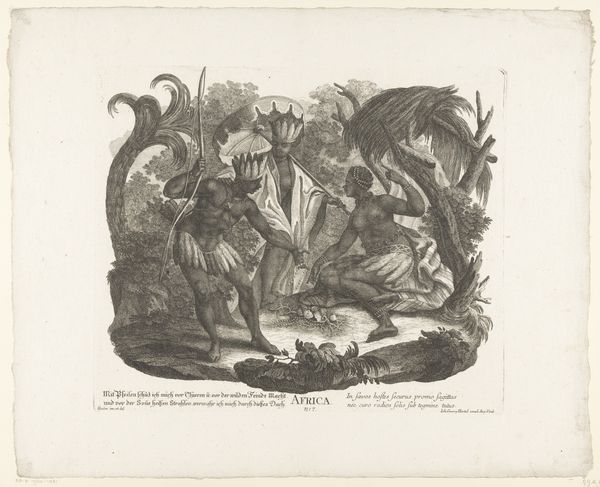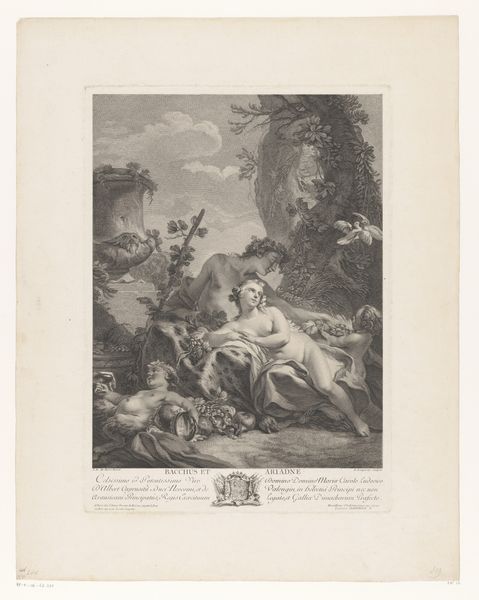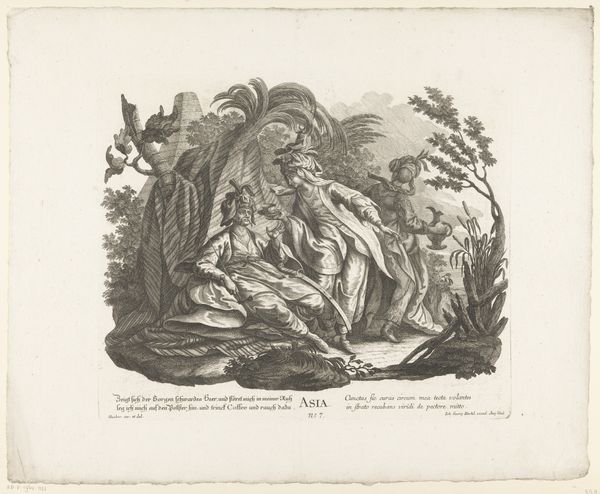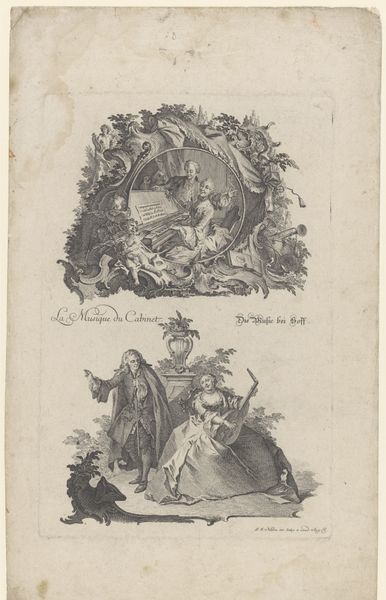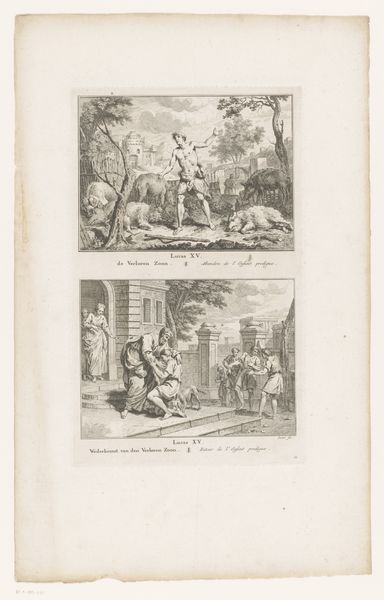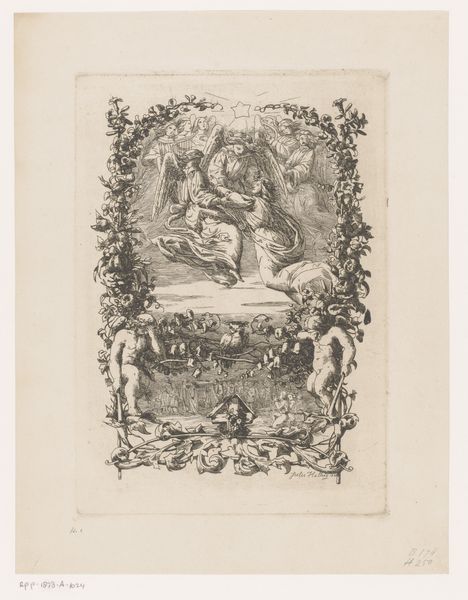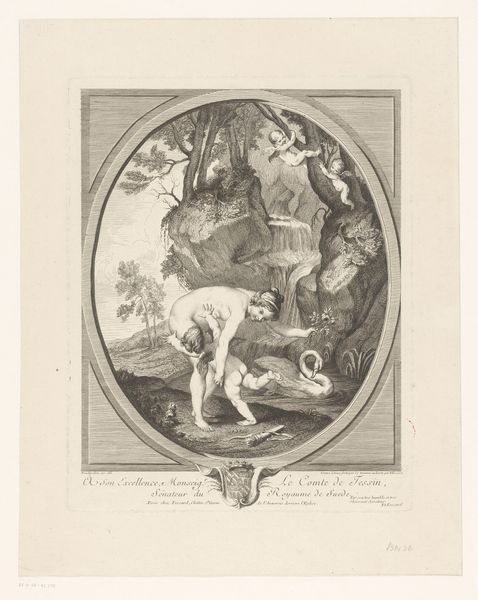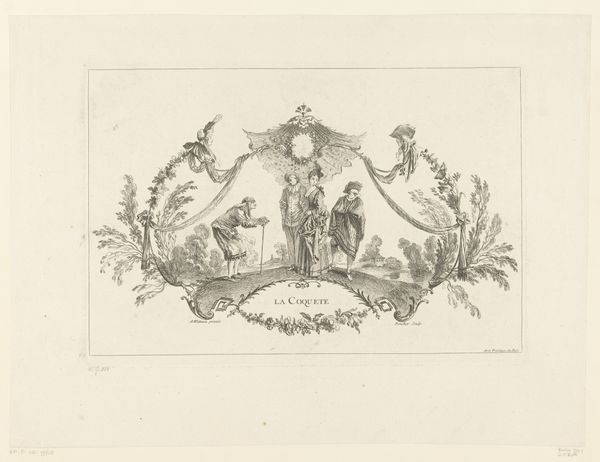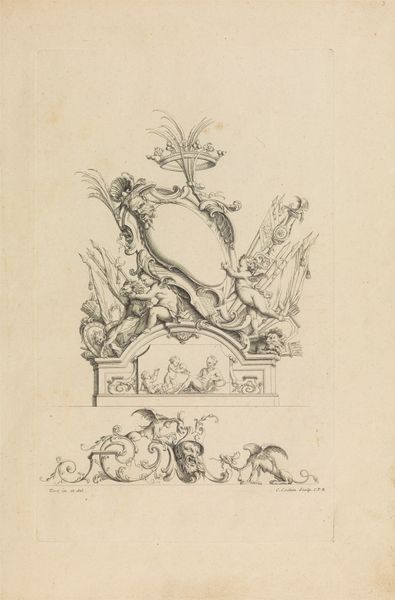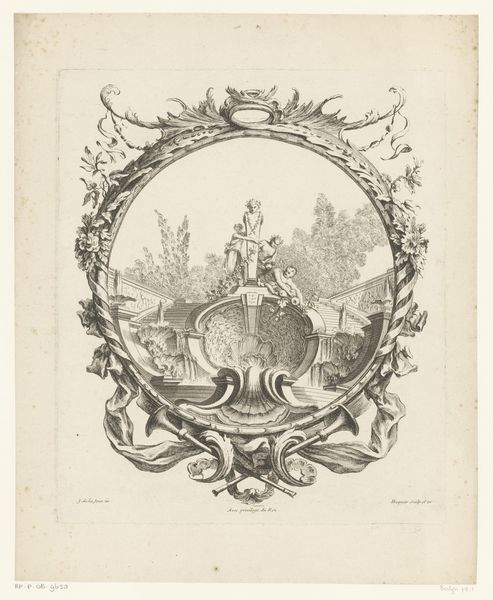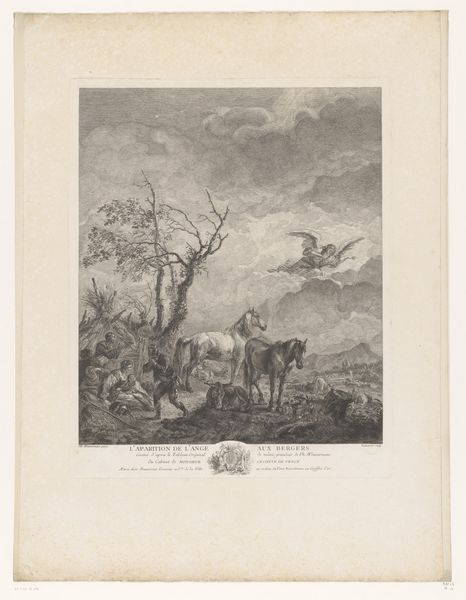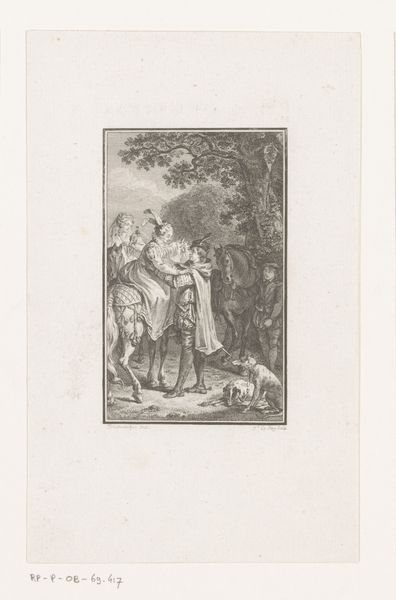
Blad met twee platen: titelprent serie 'Recueil de divers animaux de chasse' en wolf in een val 1740 - 1745
0:00
0:00
print, etching, engraving
#
narrative-art
#
animal
# print
#
etching
#
landscape
#
engraving
Dimensions: height 225 mm, width 320 mm, height 570 mm, width 452 mm
Copyright: Rijks Museum: Open Domain
Editor: This print by Johan Eric Rehn, created between 1740 and 1745, features two images: one is a title page for "Recueil de divers animaux de chasse," and the other depicts a wolf caught in a trap. I find the wolf image quite poignant, its desperation evident. What do you make of this pairing, and the context it presents? Curator: The image below exemplifies the complicated relationship humans have always had with nature. In 18th-century Europe, hunting wasn't merely a sport, it was a political and social statement, a theater for demonstrating power. These prints weren't just illustrations, they were luxury items, visual propaganda designed to legitimize aristocratic privilege. Consider the "Recueil" title itself – a collection. What does collecting these animal images signify about humanity's dominion over the natural world at that time? Editor: That's fascinating! It wasn't just about hunting itself, but about visually possessing those hunts too. Does the depiction of the trapped wolf then serve to reinforce this power dynamic? Curator: Precisely. The vulnerability of the wolf contrasts with the curated, ordered scenes on the title page above. Notice the architectural ruin, a symbol of human history and dominion. Rehn presents nature as something to be cataloged, controlled, and ultimately, dominated, fitting a common social narrative promoted by those with access to these expensive kinds of artistic renderings. What happens when wild nature and artifice combine in this image? Editor: I see now that it isn't just a picture of a wolf, but a carefully constructed argument about societal power. The connection to the historical context is eye-opening. Curator: Absolutely, and understanding that context enriches our interpretation of not just this artwork, but also its public role in the shaping of societal norms and values during its time.
Comments
No comments
Be the first to comment and join the conversation on the ultimate creative platform.
